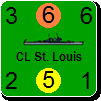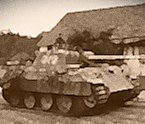heliodorus04
Posts: 1647
Joined: 11/1/2008
From: Nashville TN
Status: offline

|
To Vicberg:
I'm on your side about the pointlessness of playing Germany against a human opponent (it's an enjoyable game with the right tweaks when you play against the AI).
Here are the major factors that defeat Germany with no assistance provided by the Soviet player. In other words, these are all handicaps by design that Gary Grigsby and the community felt are acceptable. I believe each and every one of these is unacceptable and completely a-historical.
1) Morale
The morale equation is now a secret, although I do seem to recall it being published once as follows:
Die roll 75. If DR75 is less than (National Morale - Unit Morale) then morale will go up. If not, then morale stays the same. On the surface, this would make it appear that any German unit with a morale above 75 cannot increase it's morale in 1941, and we know this isn't true. There are some factors, like leadership rolls, that allow these units to increase.
The issue is "Regression to the Mean" and how a base 75 die roll ****s over Germany hard core starting in January 1942, and exacerbating its problem each and every January. Simultaneously, each and every January, the Soviet army's chances of improved morale go up (a little or a lot, depending on the year), AND the base 75 roll factored against (National Morale minus Unit Morale) gives the Soviet side a huge probabilistic advantage to raising unit morale with each successive attack (think of the Blizzard, too, and how this catapults Soviet morale).
If the equation above is close to accurate (when last I read the forum regularly, no one would share the morale equation any more, which tells me all I need to know about my point's veracity), then if you have any understanding of standard deviations, you can see that the game has Germany on a ladder to decreasing morale, and Soviet on a ladder to increasing morale.
This is compounded by the Refit morale increase mechanism, which realistically gives the Soviet side an advantage that Germany can never achieve. The reason for this is that the Soviet can sit on a lot of idle units, and (see above) Regression to the Mean of the morale formula drives up their morale without having to engage in combat. The issue here is the base75 die roll. Setting it at 75 is an artifice to keep German morale low, and enables 'ceiling space' that allows Soviet morale to grow, even in idle units with fractional TOEs.
Morale is the number one issue holding Germany down.
2) Brigades and the lack of Over-run
I completed a game in which I captured (POWs only) over 3 million Soviets, and killed another 1.5 million (KIA and disabled). At exactly the moment when I achieved numerical parity with the Soviet Union (I was within 500,000 men and near equal in guns), the Soviet brigades start to arrive.
These brigades arrive with minimal TOEs, and yet they cost a German division exactly as much MPs to attack, with no consideration given to the concept of 'over-run'. As more Soviet brigades arrive, the Soviets can force Germany to spend a disproportionate amount of MPs on Soviet units that are less than 50% TOE. So a panzer division with 100 tanks and 12K men are unable to pin down and eliminate 1,000 Soviets with 15 tanks. Over the course of a week. Ludicrous.
Without a consideration given to over-run, and with no consideration that the Soviet be required to field combat units only when they have some standard level of preparedness (as in TOE/morale/training), the Soviet is free to remove field divisions from the front and replace them with speed bump brigades.
Now add this factor in to my point above: Brigades allow the Soviet to withdraw combat units, place them on refit in the rear, and raise their morale and TOE for the upcoming blizzard.
Soviet brigades should not be allowed to move until they are in a Ready state. New divisions and brigades that are attacked while Unready should pay a heavy price in casualties (as in, shatter/surrender), but this is not the case.
3) German withdrawals versus Soviet guards cavalry
a) There is no limit on the amount of cavalry and guards cavalry that can be acquired by the Soviet in the game. As a result, Soviet cavalry dominates the bad weather of 1941, they then benefit from the 1:1 -> 2:1 rule, and upon winning a fight, they benefit from the morale rules that force their morale up faster and easier than Germany will ever face throughout the remainder of the game.
b) Germany must withdraw units by specific identity. This is to speak little of the issue with Stalingrad's surrendered divisions being withdrawn even if Stalingrad never happens. If Germany has a premier infantry division that managed to defy the morale rules and get to 91 morale, it just may be the division that is forced to withdraw. Further, if that division is at 100% TOE, it takes it ALL with it, whereas, if it's below 75% TOE, it will leave only after it sucks out Eastern Front-allocated replacements from the pool.
4) Air War
Biplanes, need I say more? Soviets rule the skies starting in 1941 unless 'nice' players use house rules. The air war can be gamed by the side with quantitative advantage. That side is never Germany.
5) Soviet command re-organization is done for free.
a)
At Turn 1, when Germany should be at its zenith of organizational preparedness, it is saddled with over-command burdens in AGS and AGC, and those will never dissipate before late 1942. Even the advent of AG B does little to mitigate this problem (and Rostov is typically a difficult target to take anyway, so AG B isn't likely going to happen in 1941).
Meanwhile, as each Soviet division is destroyed, it arrives for free back to STAVKA where it can be re-assigned for free to whatever HQ best fits it. The result is that the Soviet gets to re-organize its army in 1941 for zero AP costs. While some will point to the German army getting the same zero-AP re-assignment cost for free, that's a Red Herring argument.
b) AP costs to switch divisions
The point is that Germany should be better organized and optimized for its doctrinal flexibility of command, and the Soviets should be harder to optimize than they are. Moreover, in the average game, how many German divisions are going to be destroyed in the first year of the war between Germany and the Soviet, and who benefits more from this design decision?
This is compounded by the enigmatic decision to make German divisions cost 5 to 7 times as much to change HQs than Soviet divisions (do the math, I'm not doing it for you again, as I already have). Aggregate German leadership advantage is only 20%, yet Germany pays 500% (minimum average!) to change commands than Soviet. No design decision says "**** German Gameplay" to me like that decision.
I've heard many players argue to me that this AP switch cost difference is immaterial, and to them, I challenge them to play as Germany against whatever difficulty of AI they usually play against, only give Germany a 400 setting in Admin, and see what happens. Even if you don't use the extra AP to streamline your command (assuming you want more handicap), the fact that German leaders always make their Admin roll, reducing the cost by half to change HQs, is a massive help. It enables Germany to gain benefit from moving units in and out of Corps-level commands for refit. It enables German players to organize their corps-HQs around roles, because you can move divisions into gameplay appropriate positions. It enables Germany to make the most of the infernally variable movement point allowances of its infantry. Faster divisions can swap into the better HQs. Slower ones can fall back and refit. The way the game is set up, AP matter a lot more to Germany than most players realize. Think alone of how much easier it is to move German SUs if you had those AP costs normalized between Soviet division and German division.
6) Soviet Rail Capacity and Hindsight
It's clear to everyone now that there's little need to move Heavy Industry in the game, ever. Some players do. But since it's not necessary to move it, Soviet players have a huge hindsight advantage, and can ensure no armament points are at risk. Further, they can use the rail capacity that historically the Soviet command used to move Heavy Industry and instead move combat units around. By the Blizzard, this excess rail capacity that historically moved population and industry is instead used to create a super-mobile Train Reserve (often made up of ... wait for it... guards cavalry).
Vicberg, all the German-side-favoring players have moved on. All that remain are the beta testers who, by my definition, are biased and closed-minded.
Take your lessons from the bad taste in your mouth that this title engendered, and go to other, better games.
_____________________________
Fall 2021-Playing: Stalingrad'42 (GMT); Advanced Squad Leader,
Reading: Masters of the Air (GREAT BOOK!)
Rulebooks: ASL (always ASL), Middle-Earth Strategy Battle Game
Painting: WHFB Lizardmen leaders
|
 Printable Version
Printable Version











 New Messages
New Messages No New Messages
No New Messages Hot Topic w/ New Messages
Hot Topic w/ New Messages Hot Topic w/o New Messages
Hot Topic w/o New Messages Locked w/ New Messages
Locked w/ New Messages Locked w/o New Messages
Locked w/o New Messages Post New Thread
Post New Thread